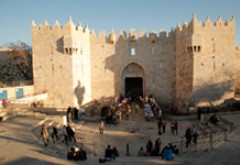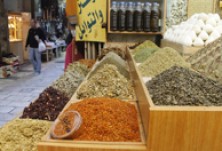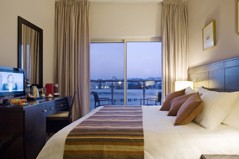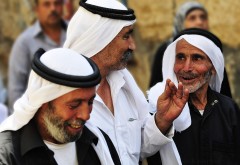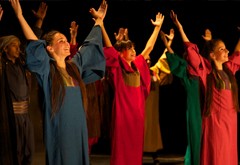Climate
The city is characterized by a hot-summer Mediterranean climate (Köppen: Csa ), with hot, dry summers, and mild, wet winters. Snow flurries usually occur once or twice a winter, although the city experiences heavy snowfall every three to four years, on average, with short-lived accumulation. January is the coldest month of the year, with an average temperature of 9.1 °C (48.4 °F); July and August are the hottest months, with an average temperature of 24.2 °C (75.6 °F), and the summer months are usually rainless. The average annual precipitation is around 550 mm (22 in), with rain occurring almost entirely between October and May. A day in Jerusalem has on average, 9.3 sunshine hours.
Most of the air pollution in Jerusalem comes from vehicular traffic. Many main streets in Jerusalem were not built to accommodate such a large volume of traffic, leading to traffic congestion and more carbon monoxide released into the air. Industrial pollution inside the city is sparse, but emissions from factories on the Israeli Mediterranean coast can travel eastward and settle over the city.
Banks and currency
The currency in Jerusalem is the New Israeli Sheckel (NIS).
Changing rate:
1 Euro: 4,9 NIS
1 USD: 3,5 NIS
You can change money at the official changers or at the bank.
Languages
Official languages in Jerusalem are Hebrew and Arabic. Several schools and private teachers are available to learn both.
Electricity
230 volts, 3 holes sockets
Cuts occasionally occur.
Public transportation
Buses (large and smaller 20-seat buses, white with green or blue routes in Arabic): they stop at the same bus stops as Israeli ones, but they also stop if you raise your arm outside of bus stops. You can pay on board. The main bus station (also for for long-distance buses) is in front of the Jerusalem hotel, some 150 m north of Damascus gate. Buses to Ramallah and Jericho leave from here.

